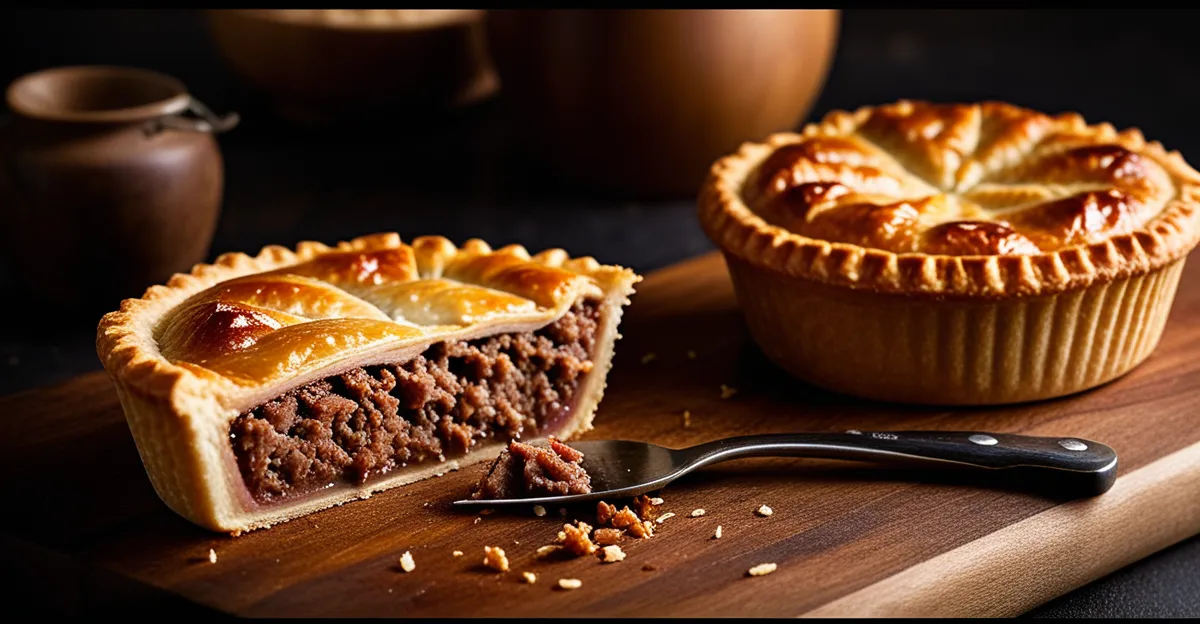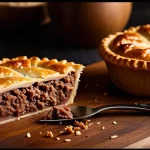Essential Ingredients and Ratios for Flaky Pork Pie Pastry
Crafting the perfect pork pie pastry ingredients begins with selecting the right kind of fat. To achieve maximum flakiness, many bakers prefer using cold butter or a combination of butter and lard. Butter adds rich flavor and creates gentle layers, while lard contributes a tender, flaky texture. Balancing these fats is crucial; too much fat can make the dough greasy, and too little results in a tough crust.
Another key factor is the fat to flour ratio, which traditionally hovers around 1:2 by weight. This means for every 100 grams of fat, you use roughly 200 grams of flour. Accurate flour measurement prevents the dough from becoming too dry or too sticky, both of which negatively impact the pastry’s structure. The flour chosen should ideally be plain or pastry flour, offering just enough protein for structure without making the pastry tough.
Also to discover : How can you achieve the ultimate flavor in a homemade black pudding?
Equally important is the water temperature for pastry. Using ice-cold water helps keep the fat solid during mixing, which is essential for creating flaky layers. Warm water can cause the fat to melt prematurely, blending too thoroughly and losing the desired crumbly texture. The water quantity, which usually ranges from 3 to 5 tablespoons per 300 grams of flour, must be added carefully to hydrate the dough just enough to hold together without overworking it.
Understanding these ingredients and ratios ensures a flaky pork pie pastry with the right balance of tenderness and strength. Proper attention to fat quality, flour measurement, and chilled water lays the foundation for a beautifully textured pie crust every time.
Also to read : How can you achieve the ultimate flavor in a homemade black pudding?
Step-by-Step Pastry Preparation Tips
For flawless pastry, strict adherence to pastry preparation tips is essential. One fundamental rule is to keep all cold ingredients for pastry thoroughly chilled. This includes the fats, water, and even the flour if possible. Cold ingredients prevent the fat from melting prematurely, which preserves the separate pockets of fat needed to create distinctive layers in the dough.
When mixing, it’s crucial to handle the dough gently with minimal effort. Overworking the dough causes gluten development, leading to a tougher, less flaky crust. Incorporating the fat quickly and mixing just until the flour is moistened ensures a tender texture without sacrificing structure.
Resting dough for pies is a non-negotiable step to ensure excellent results. Once mixed, wrap the dough and chill it for at least 30 minutes. Resting allows the fat to firm up again after mixing, lets the flour hydrate evenly, and relaxes the gluten network. This process reduces shrinkage during baking and improves overall flakiness, contributing to a superior pork pie pastry crust.
Expert Baking Techniques for Flaky Pork Pies
Achieving the perfect flaky pork pie depends heavily on precise baking techniques for pork pie. The oven temperature for pastry is critical; typically, starting the bake at a high temperature (around 200°C/400°F) helps the pastry set quickly, preserving the layered texture created by the fat. After 15-20 minutes, lowering the temperature to about 180°C/350°F ensures the pastry cooks evenly without burning, maintaining a golden, crisp crust.
Blind baking tips are invaluable, especially when working with pork pie pastry that can otherwise become soggy. Blind baking involves pre-baking the crust with baking beans or pie weights, which prevents the base from puffing up and creates a sturdy shell to hold the filling. This step is particularly useful when the filling requires longer cooking times.
Closely monitoring bake times safeguards against undercooked pastry or uneven browning. Overbaking can lead to a dry, brittle crust, whereas underbaking results in doughy, unappealing layers. Keeping an eye on color and texture during the final stages of baking ensures the pastry remains flaky and tender, striking the ideal balance for a delicious pork pie.
Common Mistakes and Troubleshooting
Baking a flawless pork pie crust demands awareness of frequent pork pie common mistakes, especially those that affect texture and structural integrity. One prevalent error is overworking the dough. When dough is handled excessively, it triggers gluten development, making the pastry tough rather than flaky. To troubleshoot this, always mix just until ingredients come together and avoid kneading, ensuring a tender crust.
Another critical issue is preventing soggy bottoms, which can ruin the pie’s appeal. Sogginess often results from insufficient pre-baking or filling moisture seeping into the crust. Applying blind baking tips helps create a firm base by pre-cooking the pastry shell with weights to stop it from puffing or soaking up excess liquid. Additionally, using a layer of breadcrumbs or crushed biscuits on the base before adding filling can absorb moisture and maintain crispness.
If the pastry turns out tough or crumbly, remedies involve evaluating fat incorporation and hydration levels. Too little fat or uneven distribution leads to dryness and crumbliness, while too much water or flour can cause toughness. Adjust the fat to flour ratio carefully, and use chilled water sparingly to achieve dough that’s easy to roll yet sturdy enough to hold its shape. Following these steps prevents common pitfalls and guarantees a delicate, flaky pork pie pastry.
Traditional Insights and Expert Advice
Traditional pork pie recipes often emphasize the critical role of both technique and ingredient quality, passed down through generations. One notable regional pastry technique involves using a combination of butter and lard in the pork pie pastry ingredients. Butter imparts flavor, while lard enhances flakiness, a balance many expert pie makers insist upon to replicate authentic textures found in historic recipes.
Experienced bakers highlight the significance of using a firm hand during dough preparation. They recommend minimal mixing to prevent gluten development, ensuring a tender but sturdy crust. Additionally, chilling the dough adequately, a step frequently underscored in expert pie tips, is pivotal for ensuring the pastry maintains its structure during baking, preventing shrinkage or misshaping that can mar the finished pie.
Adaptations for modern kitchens often involve substituting traditional fats with more accessible alternatives, but experts advise careful attention to the classic fat to flour ratio to maintain proper flakiness. They also suggest employing cold water temperature for pastry consistently across preparation stages to preserve the layered texture inherent in traditional pork pies. Such adherence respects authenticity while accommodating today’s baking environments, resulting in pies that honor their historical roots without compromise.












